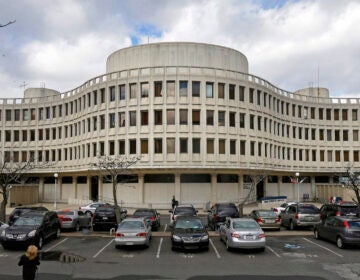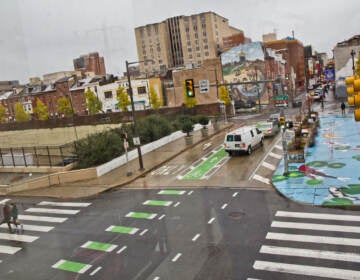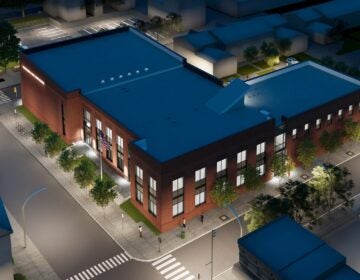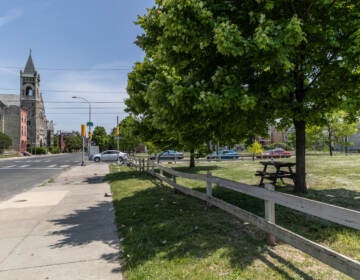Philadelphia is moving closer to selling the Roundhouse. Residents say it shouldn’t be demolished
The city has said it would release a request for proposal sometime this year.
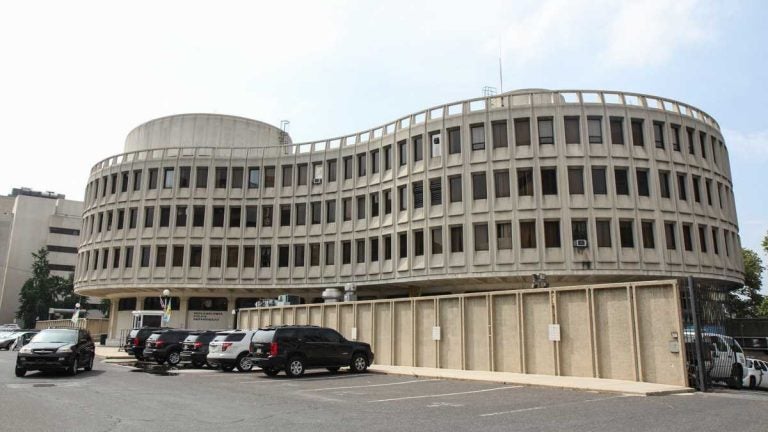
Philadelphia Police Headquarters (Kimberly Paynter/WHYY)
The city is one step closer to releasing a request for proposal for the former headquarters of the Philadelphia Police Department.
On Monday, the city’s Department of Planning and Development released a report detailing a monthslong community engagement process that’s expected to inform the future of the shuttered building at 7th and Race streets, commonly known as the Roundhouse.
The Philadelphia Historical Commission will also consider the report when it reviews an existing nomination for the Philadelphia Register of Historic Places. The process, which could protect the concrete building from demolition, will play out before the city solicits bids from potential developers.
There is no timeline for either step.
“Interest rates have doubled. Development has slowed. So I think it’s a balancing act between timing, what we’re going to require of the development teams, and then also going through the historical designation process,” said city project manager Ian Litwin.
The Roundhouse is a complicated piece of Philadelphia history, adding a layer of scrutiny to the building’s impending sale.
The Roundhouse opened in 1963 to national and international acclaim for its construction. While it’s often described as imposing, its circular design was meant to usher in a new chapter for the police department, which had previously been headquartered in the basement of City Hall.
The project, part of a broader effort to modernize the city’s municipal services, was designed to foster transparency, reinforce police-community relations, and to signal independence from the patronage politics of its former home.
But that narrative began to crumble soon after former Police Commissioner Frank Rizzo came to power in the late 1960s. Fast forward to today, and the Roundhouse is best known for the painful experiences people had inside, including at the hands of corrupt homicide detectives during their interrogations.
And yet the vast majority of the people the city surveyed about the Roundhouse said the building should stay put. Just 12% of respondents said it should be torn down, said Litwin.
“The overwhelming majority of people were like, ‘Let’s reuse the building in a way that can heal.’ Things that can help the community. Things that prevent crime,” he said.
People who participated in the community engagement process most commonly suggested using the site, which includes a large surface parking lot, for affordable housing, according to the report. There were also calls for a recreation center, museum, or event space. And for the redevelopment to benefit nearby Chinatown, a neighborhood that has often battled — and bested — developers in the past.
In addition, many respondents said they wanted to see the Roundhouse’s history recognized in the site’s next life, whether that be a memorial, a plaque, or something else. There was also widespread support for tearing down the concrete wall that was put up around part of the building shortly after it opened.
“For many Philadelphians, the Roundhouse is a symbol of the harm caused by urban renewal and police misconduct. For others, the curved, concrete structure is an architectural and engineering milestone worthy of preservation,” said Anne Fadullon, director of the city’s Department of Planning and Development in a statement. “We hope that the future of this site is one that can knit the community together, and we are proceeding with care toward that end.”

Subscribe to PlanPhilly
WHYY is your source for fact-based, in-depth journalism and information. As a nonprofit organization, we rely on financial support from readers like you. Please give today.




